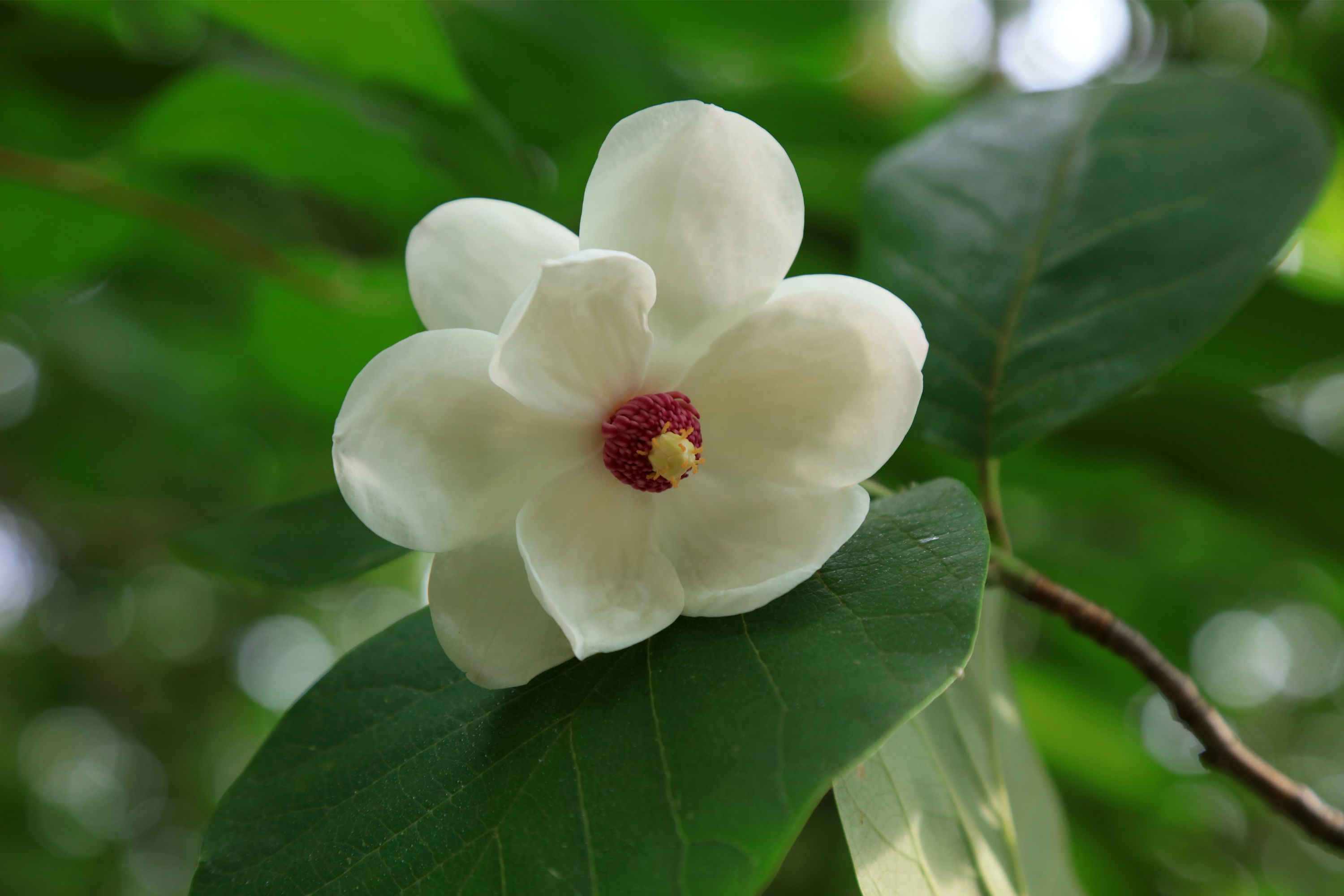Korean mountain magnolia
(Magnolia sieboldii)

Description
Magnolia sieboldii, or Siebold's magnolia, also known as Korean mountain magnolia and Oyama magnolia, is a species of Magnolia native to east Asia in China, Japan, and Korea. It is named after the German doctor Philipp Franz von Siebold (1796–1866). Magnolia sieboldii is a large deciduous shrub or small tree 5–10 m (16–33 ft) tall. The stalks, young leaves, young twigs and young buds are downy. The leaves are elliptical to ovate-oblong, 9–16 cm (rarely 25 cm) long and 4–10 cm (rarely 12 cm) broad, with a 1.5-4.5 cm petiole. The flowers, unlike the spring flowering magnolias, open primarily in the early summer, but continue intermittently until late summer. They are pendulous, cup-shaped, 7–10 cm diameter, and have 6-12 tepals, the outer three smaller, the rest larger, and pure white; the carpels are greenish and the stamens reddish-purple or greenish-white.
Taxonomic tree:







